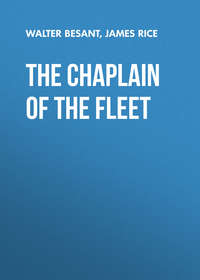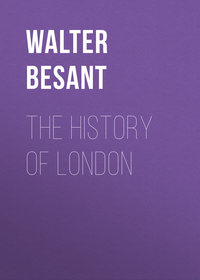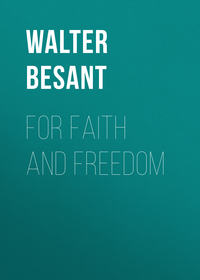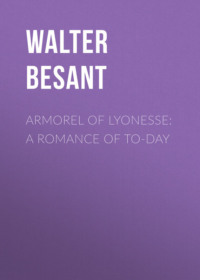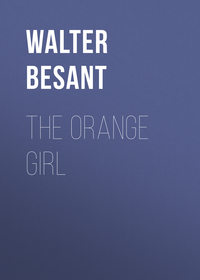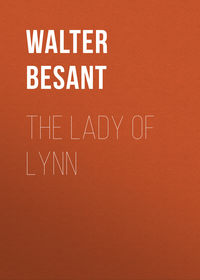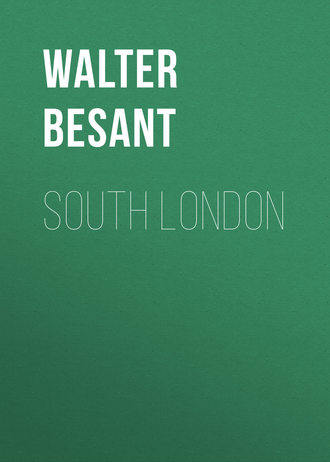 полная версия
полная версияSouth London
Here we see the popular opinion of Fastolf 'the greatest traitor in England or in France:' he who 'mynnyshed all the garrisons of Normandy, and Manns, and Mayn:' he who was the cause of the 'lesyng of all the Kyng's tytyll and rights of an heritaunce that he had by yonde see.'
The whole story is in the highest degree dramatic. Sir John wants to know what the rebellion means. Let one of his men go and find out. Let him take two horses in case of having to run for it: the rebels will most probably kill him if they catch him. Well: it is all in the day's work: what can a man expect? Would the fellow live for ever? What can he look for except to be killed some time or other? So John Payn takes two horses and sets off. As we expected, he does get caught: he is brought before Mortimer as a spy. At this point we are reminded of the false herald in 'Quentin Durward,' but in this case it is a real herald pressed into the service of Mortimer, alias Jack Cade. Now the Captain is by way of being a gentleman: very likely he was: the story about him, that he had been a common soldier, is improbable and supported by no kind of evidence. However, he conducts the affair in a courteous fashion. No moblike running to the nearest tree: no beating along the prisoner to be hanged upon a branch: not at all: the prisoner is conducted with much ceremony to the four quarters of the camp and at each is proclaimed by the herald a spy. Then the axe and the block are brought out. The prisoner feels already the bitterness of death. But his friends interfere: he must be spared or a hundred heads shall fall. He is spared: on condition that he goes back, arrays himself in his best harness and returns to fight on the side of the rebels.
Observe that this faithful person gets the 'articles' that his master wants: he also reports on the strength of the rebellion in-so-much that Sir John breaks up his garrison and retreats across the river to the Tower. But before going he tells the man that he must keep his parole and go back to the rebels to be killed by them or among them. So the poor man puts on his best harness and goes back.
They spoil him of every thing: and then, they put him in the crowd of those who fight on London Bridge.
It was a very fine battle. Jack Cade had already entered London when he murdered Lord Saye, and Sir James Cromer, Sheriff of Kent, and plundered and fined certain merchants. He kept up, however, the appearance of a friend of the people and permitted no plundering of the lower sort. So that one is led to believe that in the fight the merchants, themselves, and the better class held the bridge.
The following account comes from Holinshed. It must be remembered that the battle was fought on the night of Sunday the 5th of July, in midsummer, when there is no night, but a clear soft twilight, and when the sun rises by four in the morning. It was a wild sight that the sun rose upon that morning. The Londoners and the Kentish men, with shouts and cries, alternately beat each other back upon the narrow bridge, attack and defence growing feebler as the night wore on. And all night long the bells rang to call the citizens to arms in readiness to take their place on the bridge. And all night the old and the young and the women lay trembling in their beds lest the men of London should be beaten back by the men of Kent, and these should come in with fire and sword to pillage and destroy. All night long without stopping: the dead were thrown over the bridge: the wounded fell and were trampled upon until they were dead: and beneath their feet the quiet tide ebbed and flowed through the arches.
'The maior and other magistrates of London, perceiving themselves neither to be sure of goods nor of life well warranted determined to repell and keepe out of their citie such a mischievous caitife and his wicked companie. And to be the better able so to doo, they made the lord Scales, and that renowned Capteine Matthew Gough privie both of their intent and enterprise, beseeching them of their helpe and furtherance therein. The lord Scales promised them his aid, with shooting off the artillerie in the Tower; and Matthew Gough was by him appointed to assist the maior and Londoners in all that he might, and so he and other capteins, appointed for defense of the citie, tooke upon them in the night to keepe the bridge, and would not suffer the Kentish men once to approach. The rebels, who never soundlie slept for feare of sudden assaults, hearing that the bridge was thus kept, ran with great hast to open that passage where between both parties was a fierce and cruell fight.
'Matthew Gough perceiving the rebels to stand to their tackling more manfullie than he thought they would have done, advised his companie not to advance anie further toward Southwarke, till the daie appeared; that they might see where the place of jeopardie rested, and so to provide for the same; but this little availed. For the rebels with their multitude drave back the citizens from the stoops at the bridge foot to the draw bridge, and began to set fire to diverse houses. Great ruth it was to behold the miserable state, wherein some desiring to eschew the fire died upon their enimies weapon; women with children in their armes lept for feare into the river, other in a deadlie care how to save themselves, betweene fire, water, and sword, were in their houses choked and smothered. Yet the capteins not sparing, fought on the bridge all the night valiantlie, but in conclusion the rebels gat the draw bridge, and drowned manie, and slue John Sutton, alderman, and Robert Heisand, a hardie citizen, with manie other, beside Matthew Gough, a man of great wit and much experience in feats of chivalrie, the which in continuall warres had spent his time in service of the king and his father.
'This sore conflict indured in doubtfull wise on the bridge, till nine of the clocke in the morning; for somtime, the Londoners were beaten backe to saint Magnus corner; and suddenlie againe, the rebels were repelled to the stoops in Southwarke, so that both parts being faint and wearie, agreed to leave off from fighting till the next daie; upon condition that neither Londoners should passe into Southwarke, nor Kentish men into London. Upon this abstinence, this rake-hell capteine for making him more friends, brake up the gaites of the kings Bench and Marshalsie and so were manie mates set at libertie verie meet for his matters in hand.' (Holinshed, iii. p. 226.)
When the rebellion was over they clapped the unlucky Payn into prison and tried to get out of him some admission that might enable them to impeach Sir John of treason. This old soldier was not without some love of letters. One of his household, William Worcester, wrote for him Cicero 'De Senectute,' printed by Caxton a few years later. A MS. also exists in the British Museum called 'The Dictes and Sayings of the Philosophers,' said to have been translated for him by Stephen Perope his stepson.
After the Cade rebellion he returned to his house in Southwark but seldom. He went down into Norfolk, employed his ships in carrying stone and built his great castle of Caistor, which covered five acres. He purposed founding a College at Caistor for seven priests and seven poor folk. He assisted the building of philosophy schools at Cambridge: he made gifts to Magdalen College, Oxford. His intentions as to the College were never carried out, the bequest being transferred to Magdalen College, Oxford, for the support of seven poor priests and seven poor scholars. He died at the age of eighty. It was the misfortune of this stout old warrior that the latter half of his fighting career was in a losing cause: it was also his misfortune to incur a great part of the odium that falls upon a general who is on the losing side: at the same time, in his own actions he was, almost without exception, victorious: and there does not seem any reason why he more than any other should bear the blame of the English reverses. It was probably in deference to popular opinion that no honours were paid to the veteran of so many fights. Perhaps he was not a persona grata at Court. Certainly the story of Payn's imprisonment indicates some enemy in high quarters. Why should the Government desire to charge him with treason?
CHAPTER VII
THE BOMBARDMENT OF LONDON
The Bombardment of London, now almost as much forgotten as the all-night battle of London Bridge, took place also on a Sunday, twenty years afterwards. It was the concluding scene, and a very fit end – to the long wars of the Roses.
There was a certain Thomas, a natural son of William Nevill, Lord Fauconberg, Earl of Kent, generally called the Bastard of Fauconberg, or Falconbridge. This man was a sailor. In the year 1454 he had received the freedom of the City of London and the thanks of the Corporation for his services in putting down the pirates of the North Sea and the Channel. It is suggestive of the way in which the Civil War divided families, that though the Earl of Kent did so much to put Edward on the throne, his son did his best to put up Henry.
He was appointed by Warwick Vice-Admiral of the Fleet, and in that capacity he held Calais and prevented the despatch of Burgundians to the help of Edward. He seems to have crossed and recrossed continually.
A reference to the dates shows how slowly news travelled across country. On April the 14th the Battle of Barnet was fought. At this battle Warwick fell. On May the 4th the Battle of Tewkesbury finished the hopes of the Lancastrians. Yet on May the 12th the Bastard of Fauconberg presented himself at the head of 17,000 Kentish men at the gates of London Bridge, and stated that he was come to dethrone the usurper Edward, and to restore King Henry. He asked permission to march through the town, promising that his men should commit no disturbance or pillage. Of course they knew who he was, but he assured them that he held a commission from the Earl of Warwick as Vice-Admiral.
In reply, the Mayor and Corporation sent him a letter, pointing out that his commission was no longer in force because Warwick was dead nearly three weeks before, and that his body had been exposed for two days in St. Paul's; they informed him that the Battle of Barnet had been disastrous to the Lancastrians, and that runners had informed them of a great Lancastrian disaster at Tewkesbury, where Prince Edward was slain with many noble lords of his following.
All this Fauconberg either disbelieved or affected to disbelieve. I think that he really did disbelieve the story: he could not understand how this great Earl of Warwick could be killed. He persisted in his demand for the right of passage. The persistence makes one doubt the sincerity of his assurances. Why did he want to pass through London? If he merely wanted to get across he had his ships with him – they had come up the river and now lay off Ratcliffe. He could have carried his army across in less time than he took to fight his way. Did he propose to hold London against Edward, and to keep it while the Lancastrians were gathering strength? There was still one Lancastrian heir to the throne at least.
However, the City still refused. They sent him a letter urging him to lay down his arms and acknowledge Edward, who was now firmly established.
Seeing that he was not to be moved, the citizens began to look to their fortifications: on the river side the river wall had long since gone, but the houses themselves formed a wall, with narrow lanes leading to the water's edge. These lanes they easily stopped with stones: they looked to their wall and to their gates.
The Bastard therefore resolved upon an assault on the City. Like a skilful commander he attacked it at three points. First, however, he brought in the cannon from his ships, laying them along the shore: he then sent 3,000 men across the river with orders to divide into two companies, one for an attack on Aldgate, the other for an attack on Bishopsgate. He himself undertook the assault on London Bridge. His cannonade of the City was answered by the artillery of the Tower. We should like to know more of this bombardment. Did they still use round stones for shot? Was much mischief done by the cannon? Probably little that was not easily repaired: the shot either struck the houses on the river's edge or it went clean over the City and fell in the fields beyond. Holinshed says that 'the Citizens lodged their great artillerie against their adversaries, and with violent shot thereof so galled them that they durst not abide in anie place alongst the water side but were driven even from their own Ordnance.' Did they, then, take the great guns from the Tower and place them all along the river? I think not: the guns could not be moved from the Tower: then the 'heavie artillerie' could only damage the enemy on the shore opposite – not above the bridge.
The three thousand men told off for the attack on the gates valiantly assailed them. But they met with a stout resistance. Some of them actually got into the City at Aldgate, but the gate was closed behind them, and they were all killed. Robert Basset, Alderman of Aldgate, performed prodigies of valour. At Bishopsgate they did no good at all. In the end they fell back. Then the citizens threw open the gates and sallied forth. The Earl of Kent brought out 500 men by the Tower Postern and chased the rebels as far as Stepney. Some seven hundred of them were killed. Many hundreds were taken prisoners and held to ransom, 'as if they had been Frenchmen,' says the Chronicler.
The attack on the bridge also completely failed. The gate on the south was fired and destroyed: three score of the houses on the bridge were fired and destroyed: the north gate was also fired, but at the bridge end there were planted half a dozen small pieces of cannon, and behind them waited the army of the citizens. It is a pity that we have not another Battle of the Bridge to relate.
The captain, seeing that he had no hopes of getting possession of London, resolved to march westward and meet Edward. By this time, it is probable that he understood what had happened. He therefore ordered his fleet to await him in the Mersey, and marched as far as Kingston-upon-Thames. It is a strange, incongruous story. All his friends were dead: their cause was hopeless: why should he attempt a thing impossible? Because it was Warwick's order? Perhaps, however, he did not think it impossible.
At Kingston he was met by Lord Scales and Nicolas Fanute, Mayor of Canterbury, who persuaded him 'by fair words' to return. Accordingly, he marched back to Blackheath, where he dismissed his men, ordering them to go home peaceably. As for himself, with a company of 600 – his sailors, one supposes – he rejoined his fleet at Chatham, and took his ships round the coast to Sandwich.
Here he waited till Edward came there. He handed over to the King fifty-six ships great and small. The King pardoned him, knighted him, and made him Vice-Admiral of the Fleet. This was in May. Alas! in September we hear that he was taken prisoner at Southampton, carried to Middleham, in Yorkshire, and beheaded, and his head put upon London Bridge.
Why? nobody knows. Holinshed suggests that he had been 'roving,' i. e. practising as a pirate. But would the Vice-Admiral of the English fleet go off 'roving'? Surely not. I take it as only one more of the thousand murders, perjuries, and treacheries of the worst fifty years that ever stained the history of the country. There was but one complete way of safety for Edward – the death of every man, noble or simple, who might take up arms against him. So the Bastard – this fool who had trusted the King and given him a fleet – was beheaded like all the rest.
CHAPTER VIII
THE PILGRIMS
The town was full of those who carried in their hats the pilgrim's signs. Besides the ordinary insignia of pilgrimage, every shrine had its special signs, which the pilgrim on his return bore conspicuously upon his hat or scrip or hanging round his neck (see Skeat, Notes to Piers Plowman) in token that he had accomplished that particular pilgrimage. Thus the ampullæ were the signs of Canterbury; the scallop shell that of St. James of Compostella; the cross keys and the vernicle of Rome – the vernicle was a copy of the handkerchief of St. Veronica, which was miraculously impressed with the face of our Lord. These shrines were cast in lead in the most part. Thus in the supplement to the Canterbury Tales,
Then as manere and custom is, signes there they bought,For men of contre should know whom they had sought;Eche man set his silver in such thing as they liked,And in the meanwhile the miller had y-pikedHis barns full of signes of Canterbury brought.Erasmus makes Menedemus ask, 'What kind of attire is this that thou wearest? It is all set over with shells scolloped, full of images of lead and tin, and charms of straw work, and the cuffs are adorned with snakes' eggs instead of bracelets.' To which the reply is that he has been to certain shrines on pilgrimage. The late Dr. Hugo communicated to the Society of Antiquaries a paper in which he enumerated and figured a great many of these signs found in different places, but especially in the river when Old London Bridge was removed. Bells —Campana Thomæ– Canterbury Bells – were also hung from the bridles, ringing merrily all the way by way of a charm to keep off evil.
Every day in the summer parties of pilgrims started from one or other of the Inns of Southwark: there was the short pilgrimage and the long pilgrimage: the pilgrimage of a day: the pilgrimage of a month: and the pilgrimage beyond the seas. From Southampton and at Dartmouth sailed the ships of those who were licensed to carry pilgrims to Compostella, which was the shrine of St. Iago: or to Rome: or to Rocamadom in Gascony: or to Jaffa for the Holy Places. The pilgrimage outremer is undoubtedly that which conferred the longest indulgences, the greatest benefits upon the soul, and the highest sanctity upon the pilgrim.
In the matter of short pilgrimages, the South Londoner had a considerable choice. He might simply go to the shrine of St. Erkenwald at Paul's, or to that of Edward the Confessor at Westminster, he might even confine his devotions to the Holy Rood of Bermondsey. If he wished to go a little further afield, there were the shrines of Our Lady of the Oak; of Muswell Hill; or of Willesden. But these were all on the north side of London and belonged to the City rather than to Southwark. For him of the Borough there was the shrine of Crome's Hill, Greenwich, which provided a pleasant outing for the day: it might be prolonged with feasting and drinking to fill up the whole day, so that the whole family could get a holiday combined with religious exercises in good company and return home at night, each happy in the consciousness that so many years were knocked off purgatory.
For the longer pilgrimages there were of course the far distant journeys to Jerusalem, generally over land as far as Venice, and then by a 'personally conducted' voyage, the captain providing escort to and from the Holy Places. There were also pilgrimages to Compostella: to Rome: to Cologne: and other places.
For pilgrimage within the four seas, the pious citizen of South London had surely no choice. For him St. Thomas of Canterbury was the only Saint. There were other Saints, of course, but St. Thomas was his special Saint. No other shrine was possible for him save that of St. Thomas. Not Glastonbury: nor Walsingham: nor Beverley: but Canterbury contained the relics the sight and adoration of which would more effectively assist his soul.
In Erasmus's Dialogue of the Pilgrimage we have an account of what was done and what was shown at the shrines of Our Lady of Walsingham and St. Thomas of Canterbury.
'The church that is dedicated to St. Thomas raises itself up towards heaven with that majesty that it strikes those that behold it at a great distance with an awe of religion, and now with its splendour makes the light of the neighbouring palaces look dim, and as it were obscures the place that was anciently the most celebrated for religion. There are two lofty turrets which stand as it were bidding visitants welcome from afar off, and a ring of bells that make the adjacent country echo far and wide with their rolling sound. In the south porch of the church stand three stone statues of men in armour, who with wicked hands murdered the holy man, with the names of their countries – Tusci, Fusci, and Betri…
'Og. When you are entered in, a certain spacious majesty of place opens itself to you, which is free to every one. Me. Is there nothing to be seen there? Og. Nothing but the bulk of the structure, and some books chained to the pillars, containing the gospel of Nicodemus and the sepulchre of I cannot tell who. Me. And what else? Og. Iron grates enclose the place called the choir, so that there is no entrance, but so that the view is still open from one end of the church to the other. You ascend to this by a great many steps, under which there is a certain vault that opens a passage to the north side. There they show a wooden altar consecrated to the Holy Virgin; it is a very small one, and remarkable for nothing except as a monument of antiquity, reproaching the luxury of the present times. In that place the good man is reported to have taken his last leave of the Virgin, when he was at the point of death. Upon the altar is the point of the sword with which the top of the head of that good prelate was wounded, and some of his brains that were beaten out, to make sure work of it. We most religiously kissed the sacred rust of this weapon out of love to the martyr.
'Leaving this place, we went down into a vault underground; to that there belong two showmen of the relics. The first thing they show you is the skull of the martyr, as it was bored through; the upper part is left open to be kissed, all the rest is covered over with silver. There is also shown you a leaden plate with this inscription, Thomas Acrensis. And there hang up in a great place the shirts of hair-cloth, the girdles, and breeches with which this prelate used to mortify his flesh…
'Og. From hence we return to the choir. On the north side they open a private place. It is incredible what a world of bones they brought out of it, skulls, chins, teeth, hands, fingers, whole arms, all which we having first adored, kissed; nor had there been any end of it had it not been for one of my fellow-travellers, who indiscreetly interrupted the officer that was showing them…
'After this we viewed the table of the altar, and the ornaments; and after that those things that were laid up under the altar; all was very rich, you would have said Midas and Croesus were beggars compared to them, if you beheld the great quantities of gold and silver…
'After this we were carried into the vestry. Good God! what a pomp of silk vestments was there, of golden candlesticks! There we saw also St. Thomas's foot. It looked like a reed painted over with silver; it hath but little of weight, and nothing of workmanship, and was longer than up to one's girdle. Me. Was there never a cross? Og. I saw none. There was a gown shown; it was silk, indeed, but coarse and without embroidery or jewels, and a handkerchief, still having plain marks of sweat and blood from the saint's neck. We readily kissed these monuments of ancient frugality…
'From hence we were conducted up higher; for behind the high altar there is another ascent as into another church. In a certain new chapel there was shewn to us the whole face of the good man set in gold, and adorned with jewels…
'Upon this, out comes the head of the college. Me. Who was he, the abbot of the place? Og. He wears a mitre, and has the revenue of an abbot – he wants nothing but the name; he is called the prior because the archbishop is in the place of an abbot; for in old time every one that was an archbishop of that diocese was a monk. Me. I should not mind if I was called a camel, if I had but the revenue of an abbot. Og. He seemed to me to be a godly and prudent man, and not unacquainted with the Scotch divinity. He opened us the box in which the remainder of the holy man's body is said to rest. Me. Did you see the bones? Og. That is not permitted, nor can it be done without a ladder. But a wooden box covers a golden one, and that being craned up with ropes, discovers an inestimable treasure. Me. What say you? Og. Gold was the basest part. Everything sparkled and shined with very large and scarce jewels, some of them bigger than a goose's egg. There some monks stood about with the greatest veneration. The cover being taken off, we all worshipped. The prior, with a white wand, touched every stone one by one, telling us the name in French, the value of it, and who was the donor of it. The principal of them were the presents of kings…


